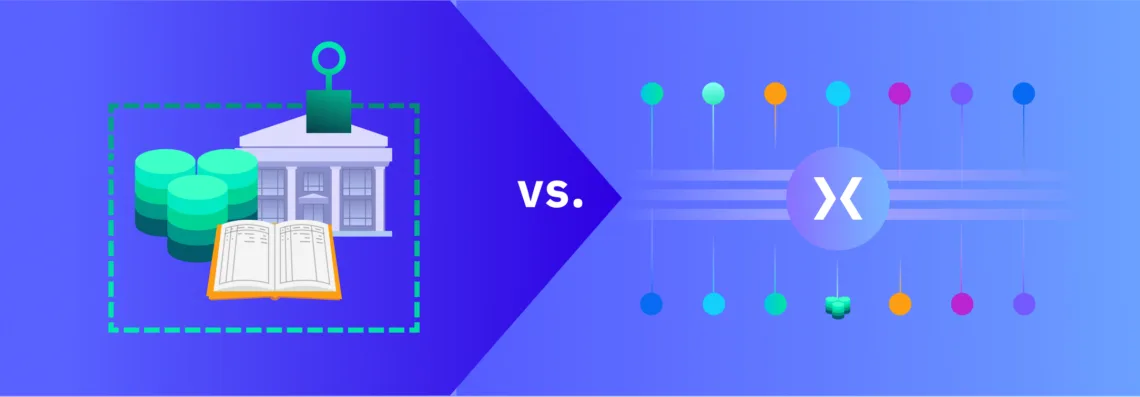Most financial institutions (FIs) still rely heavily on core providers like Fiserv, FIS, or Jack Henry for integrating system applications. This blog explores the inherent challenges of this prevalent approach, including the additional costs and lack of transparency often associated with it, known as ‘blackboxing.’ We’ll also introduce how an Integration-Platform-as-a-Service (IPaaS), like PortX, offers a modern alternative, transforming how FIs handle system integrations and adapt quickly to the evolving demands of digital banking.
The point-to-point state of today’s banking architecture
Over 90% of the FIs we start projects with still operate with what is known as point-to-point connectivity. In this prevailing integration method, FIs frequently turn to their core providers, such as Fiserv, FIS, Jack Henry, or the equivalent, for an integration solution to a new CRM, account opening solution, payment platform, or whatever else the FI needs to connect to.
Typically, core providers either persuade FIs to adopt their proprietary product, maintaining brand loyalty, or they offer to facilitate the integration of third-party fintech solutions. However, this service usually comes with additional costs, including charges for professional services and ongoing maintenance.
What is a ‘black box’ core?
A critical issue with this integration approach is the lack of transparency it causes for the FI’s technology team, often called ‘blackboxing.’ This term, familiar in IT circles, describes a situation where the inner workings of integration are not visible to the team, leaving them without insight into the process and no capability to repurpose the integration for other uses. FIs might invest significantly (we’ve seen up to $2 million) in these integrations for online banking or major payment systems, but they often only receive the system’s basic functionality without any additional value.
This situation is common, as many vendors offer similar integration services for fintechs or FIs. Although these services may be competently executed, they often result in the same ‘blackboxing’ issue, with no visibility into the code and no strategy for future reuse.
Core-provided APIs (vendor middleware) can’t solve the spider web effect
Unfortunately, for the FI in this situation, the core-provided API only solves half of the problem – connecting the FI’s applications to its core. However, the challenge is far more complex in the modern banking environment, extending beyond the core to connecting multiple systems across diverse data channels. Many fintechs directly write to the core for third-party products, or FIs will hire a consultant to build a point-to-point integration, potentially increasing the risk of system vulnerabilities and inefficiencies.
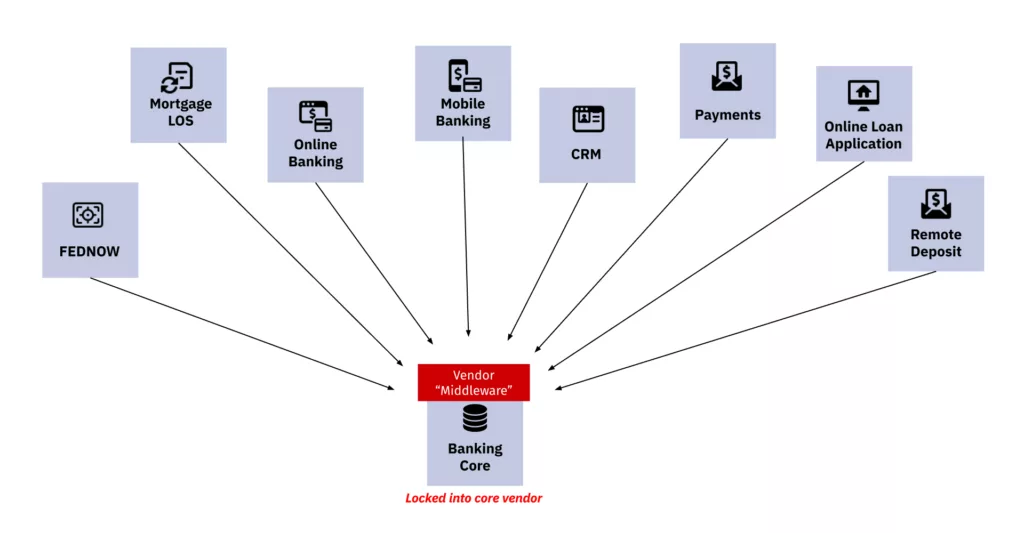
Following the “everything to the core” model leads to an integration architecture called the ‘spider web effect.’ Compounding the issue, modern FIs can commonly manage a network of up to 400 interconnected applications. This complexity places a significant burden on institutions, making it extremely challenging to integrate new technologies or collaborate effectively with modern fintechs without breaking this brittle architecture.
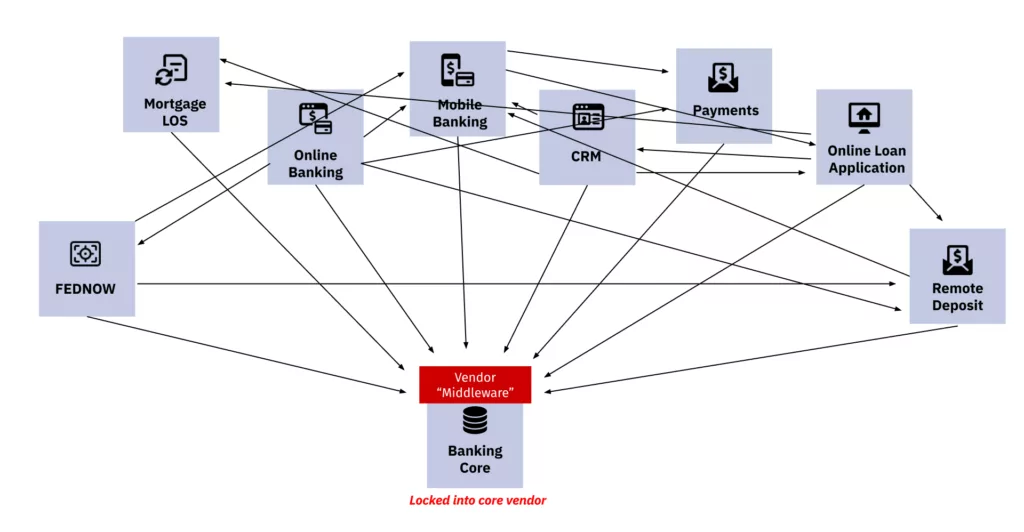
IPaaS differs fundamentally from core API
In contrast, an Integration-Platform-as-a-Service (iPaaS), such as PortX, delivers a comprehensive suite of services – abstracting the dependence an FI has on its core and positions it rightfully as the general ledger it should be. This approach extends beyond technology implementation to include ongoing maintenance, development support, and assistance with third-party onboarding. It encompasses a broader range of functionalities involved in API development, integration workflow, and banking operations. A robust platform should also include low-code tooling that democratizes the integration process, making it accessible and manageable for a wider range of users within the financial institution.
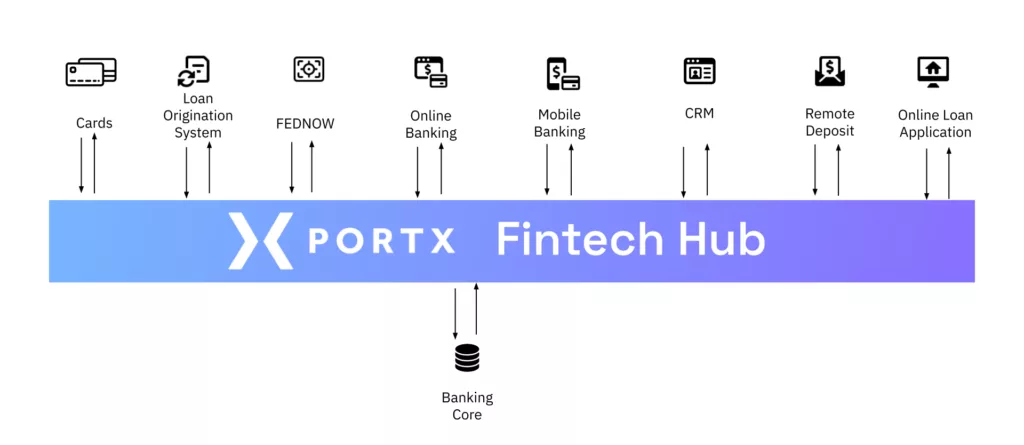
A significant advantage of this approach is the newfound visibility into data layers between applications. In Integration Manager, we’ve implemented an Observability Portal, enhancing data observability across systems. This feature is crucial because it allows FIs to monitor data flow through various integration points, enabling us to promptly identify and respond to issues. For instance, PortX can detect system downtimes, prolonged processes, or bugs as they occur and immediately notify the concerned parties – often before the vendor is even aware of an outage.
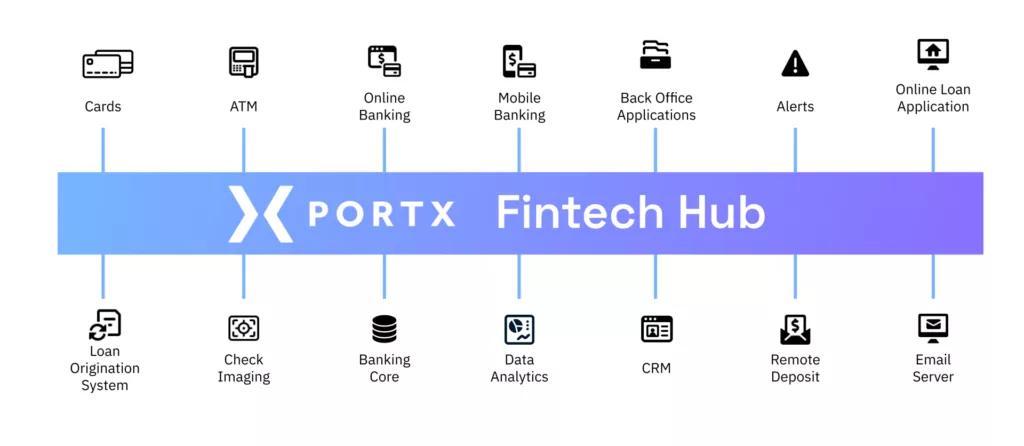
BaaS and Embedded Finance are shifting the ‘center of gravity’ away from the core
In the financial industry, a notable trend is the shift in focus towards banking-as-a-service, embedded finance, and the integration of systems like shadow cores and data warehouses. This evolution highlights the growing importance of systems like Customer 360, which enable institutions to gain comprehensive insights into customer interactions for effective cross-selling and upselling. As a result, the ‘center of gravity’ in banking technology is shifting, with FIs increasingly investing more in these applications than in traditional core systems.
The IPaaS model described above has proven effective for over 30 years in other industries. If you would like to learn more about how this approach enhances operational efficiency and ensures that banks are equipped to connect with emerging fintech solutions effectively, start a conversation with one of our team members today.
